Creating an Automatic Signature in Gmail: A Comprehensive Guide


Intro
In an era where digital correspondence reigns supreme, the significance of a professional email signature cannot be overstated. It serves as a virtual business card, leaving a lasting impression and encapsulating essential information about the sender. Establishing an automatic signature in Gmail can enhance communication by ensuring that every email reflects a polished image, helping to reinforce brand identity and professionalism.
This article meticulously navigates the intricacies of creating an automatic signature in Gmail. It explores not just the mechanics of generating a signature but also the design choices and elements that make it effective. Whether you are a business professional seeking to elevate your email etiquette or a tech enthusiast eager to master Gmail’s features, this guide endeavors to equip you with the knowledge you need to create a signature that stands out.
Key Software Features
In diving into the world of Gmail signatures, it’s essential to grasp the software features that facilitate this process. These functionalities are designed to streamline your workflow and enhance your email communication.
Essential Functionalities
- Customizable Templates: Gmail provides various templates for signatures, allowing users to choose layouts that resonate with their style while promoting brand consistency.
- Text Formatting Options: Users can modify fonts, colors, sizes, and even incorporate hyperlinks and images, offering a versatile approach to signature creation.
- Mobile Compatibility: With most professionals accessing email on the go, Gmail signatures are fully responsive, ensuring they display properly on mobile devices.
Advanced Capabilities
- Multiple Signatures: One of the exciting features in Gmail is the option to create multiple signatures. This means you can have distinct signatures for different occasions, like formal communications versus casual interactions.
- Integration with Google Workspace: For those utilizing Google Workspace, the signature can include dynamic information such as job title, company logo, and social media links, which automatically update as your profile changes.
"A well-crafted email signature is not just a closing statement; it’s a pathway to deeper engagement with your audience."
Comparison Metrics
While it might seem like a straightforward process, having a well-thought-out approach to crafting an email signature in Gmail means considering various metrics that can enhance its effectiveness.
Cost Analysis
Creating an automatic signature in Gmail is completely free for standard Gmail users. For those using Google Workspace, the costs vary based on the subscription plans but can yield added benefits, such as enhanced customization options and team-wide signature management.
Performance Benchmarks
To assess the impact of your email signature, consider tracking open rates and responses to emails. Understanding how recipients engage with your emails after including a signature can guide future adjustments to make it more effective.
In summary, crafting an automatic signature in Gmail goes beyond merely adding your name at the end of emails. It’s about branding, professionalism, and enhancing communication. The key features and metrics discussed herein lay the groundwork for developing an automatic signature that not only looks good but serves meaningful functions in the digital workspace.
Understanding Email Signatures
In the realm of digital communication, an email signature serves more than just a formality; it acts as an essential tool for professionals looking to create a polished, authentic presence. The very essence of an email signature lies in its ability to convey essential contact information and brand identity, effectively tying together correspondence that often lacks visual cues. Imagine your email as a conversation; just like in verbal interactions, the conclusion tends to be memorable. That’s what a well-crafted signature accomplishes—it leaves an impression.
When you receive an email without a signature, it can feel a bit off, like chatting with someone who keeps their hands in their pockets—there’s information missing, a sense of incompleteness. Thus, the inclusion of an email signature ensures that recipients have all the necessary details at their fingertips, encouraging connection and fostering credibility.
Defining the Purpose of an Email Signature
The purpose of an email signature is multifaceted. On one level, it provides essential contact information: your name, job title, company name, phone number, and website. But it goes beyond that. With the right design and content, it can serve as a marketing channel, too. You can utilize the space to promote your business, direct readers to your latest blog post, or invite them to follow your social media profiles. This not only enhances your visibility but also establishes you as a thought leader in your field.
Another crucial purpose is to add a personal touch to your emails. A signature conveys professionalism as well as warmth—it's like a digital business card that enhances your personal brand and connects with the recipient on a deeper level. Furthermore, for a consistent presentation, employing an automatic signature across different devices reflects a uniform business image, an aspect that's vital in today's interconnected world.
The Importance of Professional Image
A professional image in correspondence speaks volumes. An email isn’t just about exchanging messages; it reflects who you are and your attention to detail. A signature is almost like a handshake, setting the tone for the entire interaction. With countless emails landing in inboxes daily, those that stand out often have well-structured signatures.
Consider the context; for business professionals and entrepreneurs, the impression you create can make or break opportunities. A hastily put-together signature can be seen as a lack of professionalism, suggesting that you may not be serious about your endeavors. In contrast, a carefully designed signature can reinforce your authority and trustworthiness.
"Your email signature is the capstone of your communication."
In summary, the intricate details of an email signature play a pivotal role in shaping perceptions, thus influencing potential collaborations and long-term relationships. By investing time in crafting a compelling signature, you not only embody professionalism but also strategically leverage your emails to enhance your visibility and influence.
Choosing the Right Signature Format
Choosing the right format for your email signature plays a crucial role in how your correspondents perceive your professionalism. The format you select can affect readability, the impression you leave, and even how your signature appears across devices. In today's digital landscape, where first impressions often happen via email, ensuring your signature aligns with your style and purpose is essential.
When considering your email signature's format, think about what elements you want to include. Should your signature primarily showcase your name and title, or do you want it to serve as a mini marketing tool with your logo and social links? Prioritizing clarity over clutter should be the top of your checklist. Here are a few factors to weigh as you make your decision:
- Simplicity and Clarity: Avoid excessive information that can overshadow your essential details. Stick to the basics but feel free to add elements that reflect your personality or brand.
- Consistency in Branding: Your email signature is a direct reflection of your personal or company brand. Consistency in colors, fonts, and layout is key to cohesive branding.
- Adaptability: Consider how your signature will be viewed on various devices—mobile phones, tablets, and desktops. A signature that looks great on a laptop may appear cramped on a phone.
All in all, choosing the right signature format is about striking the right balance between professionalism and personality. It will not only enhance your email communication but can also subtly influence how people perceive your overall brand.
Exploring Text-Based Signatures
Text-based signatures are a straightforward option often favored for their simplicity and clean appearance. While they may seem less flashy than their graphic-heavy counterparts, text-based signatures can pack a punch when executed thoughtfully.
Here are a few advantages of opt-ing for a text-based signature:
- Load Faster: Text signatures load quickly on all devices, which is a big plus in this mobile-first age.
- Readability: They’re universally readable. No matter the software or email client, your recipients will see your text exactly as you intended.
- Professionalism: For certain industries, a minimalist approach conveys seriousness and reliability.
On the flip side, while they are easy to create and maintain, you should consider how to incorporate a bit of flair. For example, using a particular font style can reflect your personality or brand. Just be careful not to overdo it, as legibility should remain paramount.
Incorporating Images and Logos
Including images or logos in your email signature can elevate your professional presentation. It’s essentially the digital equivalent of a business card, allowing you to visually brand your communications. However, there are a few nuances to consider when adding visuals to your signature:
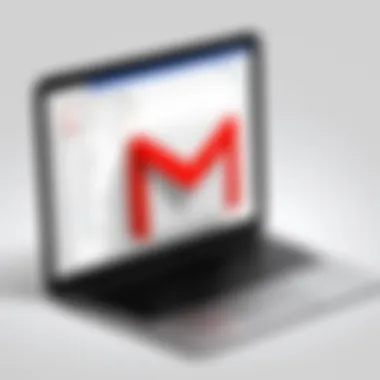
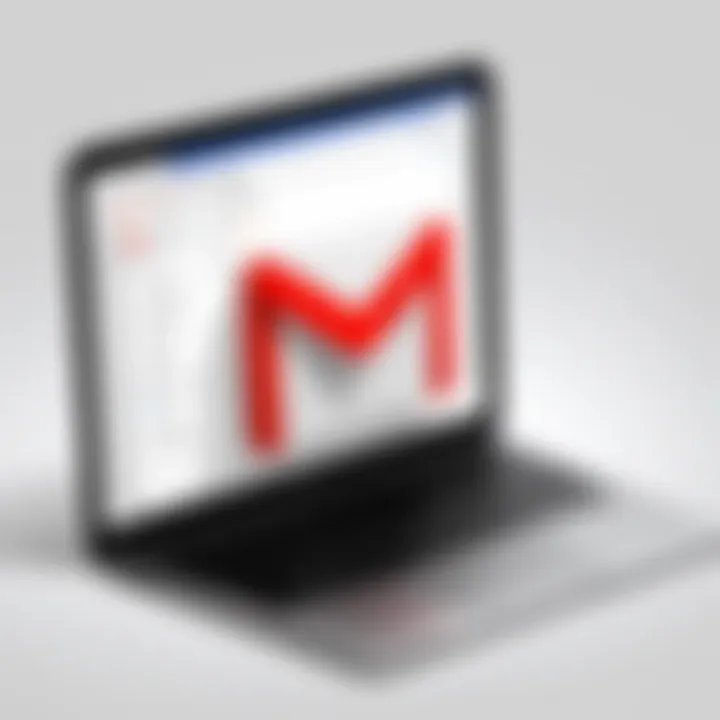
- Brand Recognition: A logo helps reinforce brand identity. Clients and partners often remember the image over text, making consistency in your logo vital across all platforms.
- Design Quality: Use high-resolution images to avoid pixelation. You wouldn't show up to a business meeting looking unkempt, so don’t let your signature reflect a lack of professionalism either.
- File Size: Keep the image file size small to prevent your emails from being flagged as spam or taking forever to load.
Furthermore, consider the placement and sizing of these images. A logo that's too large can overshadow your contact details. Striking a balance between visual appeal and information delivery is your best bet.
Adding Links to Your Signature
Adding links to your email signature can serve multiple purposes from making it easy for clients to contact you on social media to showcasing your website.
Here’s why incorporating links can be beneficial:
- Ease of Access: Ensure that recipients can effortlessly reach your social media profiles or company website with just one click.
- Showcasing Work: If you’re a freelancer or in a creative field, directing people to your portfolio can make a great impression.
- Encouraging Engagement: Links can invite engagement, such as directing users to a newsletter signup page or survey, enhancing interaction with your brand.
Whether you incorporate hyperlinks for your name, company name, or even social media icons, it’s essential to verify they are functioning links. After all, a broken link can lead to missed opportunities.
By making calculated choices about format, linking effectively, and incorporating visuals, you craft an email signature that not only embodies your professional identity but also serves as a powerful tool in your communication arsenal.
Accessing the Gmail Signature Settings
Getting your signature set up right is vital to making those email exchanges feel more refined. Gmail’s signature feature not only gives you the chance to add your flair but also ensures you leave a lasting impression on your recipients. Knowing how to access the signature settings is your gateway to crafting an automatic signature that reflects your professionalism and personal brand.
Navigating the Gmail Interface
Once you’re logged into your Gmail account, the main interface awaits your command. You’ll notice a simple, user-friendly design. Your inbox, chats, and other features are all neatly laid out.
- Look for the Gear Icon: In the top right corner, a gear icon is waiting. Click on it to unveil a drop-down menu. This menu is where the magic happens.
- Select "See all settings": This option will transport you to a more comprehensive settings page, revealing a trove of customization options.
In this section, everything is organized into tabs, allowing you to drill down into just what you need. To set those signature arrangements, you’ll want to focus your attention on the “General” tab.
Locating the Signature Configuration Area
When you’re in the General tab, you’ve nearly arrived at your destination. Scroll down until you find the section slotted for signatures - it’s usually right after the email formatting options.
- Signature Section: The signature area is where you can create and edit all the components of your signature. Here are critical observations to help guide you:
- Default Signature Options: If you have multiple email accounts in Gmail, you can select which email to have a signature for and customize appropriately.
- Create New: If you haven’t created a signature yet, you’ll see a prompt to do so. Click on “Create New” to start from scratch.
- Edit Existing Signatures: If you already have one set up, don’t worry—you can update or tweak it here with ease.
This section empowers you to mold your email identity, ensuring every message you send is marked with professionalism.
By mastering these navigational steps, you’re laying the groundwork for an effective email signature. The configuration area serves as the canvas for your signature and sets the stage for the unique personal touch you’ll soon add.
Creating Your Gmail Signature
Creating a distinctive Gmail signature is more than just an aesthetic decision; it reflects your professionalism and aids in effective communication. An email signature serves as a digital business card, providing essential information such as your name, position, company, and contact details. It sets the tone for your correspondence, reinforcing your brand and ensuring recipients can reach you quickly. This section will highlight the practical elements of designing your signature while discussing the considerations that come into play during the process.
Editing Your Signature Text
The first step in creating your Gmail signature involves the careful selection and editing of text. You should aim for clarity and precision in conveying your essential info. Mixing formality and approachability can work wonders. Keep the font simple and ensure there's no clutter in the content. A well-qualified signature usually contains:
- Your full name
- Job title
- Company name
- Phone number
- Website link (if relevant)
It's advisable to make the effect of your words count. Get rid of unnecessary fluff to maintain focus. Paraphrasing essential elements while using a consistent format will enhance readability. Proofread for typos or awkward phrasing; letting mistakes slip can undermine even the best-crafted email.
Formatting Options: Fonts, Sizes, and Colors
Once your text is polished, the next step is to make it visually appealing with formatting options. Selecting the right font can make a world of difference. In Gmail, you have several pre-installed fonts to choose from:
- Arial: Clean and professional
- Verdana: Readable and informal
- Georgia: A bit more formal, adds character
Consider using a font size that is easily readable. Typically, a size between 10 to 12 points works well. You don't want your signature to shout at the recipient through size or complex colors.
Color choice is pivotal too; opting for subtle shades resonates with professionalism. A good rule of thumb is to select colors that coincide with your company's branding. Using too many colors can be disruptive, so stick to a maximum of two or three colors that complement one another.
Inserting Images or Logos
Integrating a personal or company logo can elevate your Google signature, lending a professional polish. Importing an image is straightforward through Gmail's settings. Follow these steps to insert your logo:
- Save your logo to a readily accessible location on your device.
- In Gmail's signature settings, click on the image icon.
- Upload your logo from your files.
Ensure that the image dimensions are appropriate, meaning it shouldn't overshadow your text. A logo that appears too large can be distracting. Also, opt for high-quality images in formats such as PNG or JPEG to avoid pixelation issues.
Remember: Images that don't render properly on other devices can cause your signature to lose its professionalism. Whenever possible, use a reliable host or link if the image does not directly upload smoothly.
Customizing Signature Behavior
Customizing signature behavior is an essential aspect of email management, particularly when it comes to using Gmail for professional communication. This element not only adds a personal touch but also enhances clarity and responsiveness in your exchanges. The flexibility to tailor signatures according to the context can reflect your adaptability and professionalism.
Essentially, customizing signature behavior allows users to display different signatures based on multiple factors such as email type or recipient, enabling a more organized approach to communication. For instance, having one signature for formal business correspondence and another for casual exchanges can significantly improve the perception of your professionalism and establish a clear brand identity. It’s all about knowing your audience and responding accordingly.
Setting Up Different Signatures for Multiple Accounts
When dealing with multiple Gmail accounts, whether they be for personal, business, or other ventures, setting up different signatures for each can greatly enhance your communication strategy. It’s not uncommon to have a formal tone for client emails and a more relaxed one for correspondence with team members. The benefit here is tailoring each interaction to fit its purpose, ensuring that the appropriate level of professionalism is maintained.
To set this up:
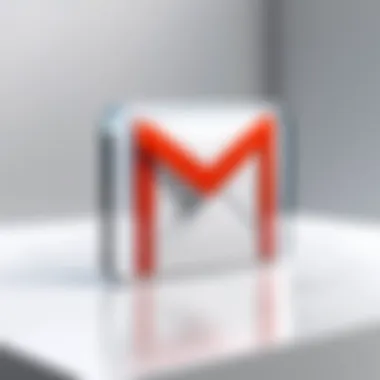
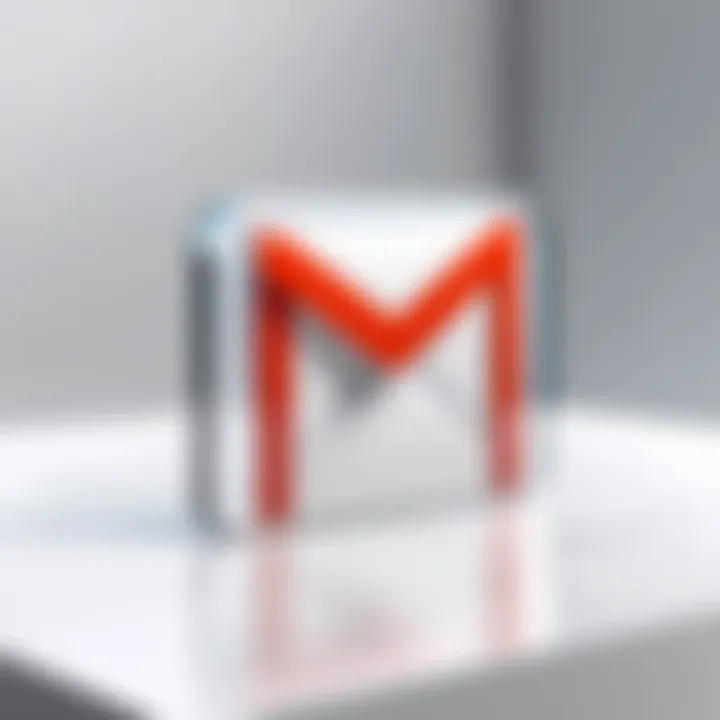
- Open Gmail: Log into the Gmail account you want to modify.
- Settings Gear: Click on the gear icon in the upper right corner and select "See all settings."
- General Tab: Under the 'General' tab, scroll down to the 'Signature' section.
- Create New Signature: Click on 'Create new' to add a distinct signature for this account.
- Label Accordingly: Remember to give it a recognizable name for easy identification.
By repeating this process for each account, you maintain distinct signatures that reflect the tone and nature of each specific relationship.
Applying Signatures to New Emails versus Replies
Applying different signatures to new emails versus replies can further streamline your email communication. This helps in maintaining context; a fresh email to a client might warrant a formal introduction, while a reply to a long-time colleague may be better served with a casual sign-off.
To manage this effectively:
- Check Signature Settings: In the same Signature settings as mentioned earlier, you’ll find options to apply signatures to either new emails, replies, or both.
- Make Your Choice: Decide if you want to keep the same signature across both types or define two distinct ones for tailored experiences.
- Consistency in Tone: Ensure the language and style fit the relationship.
By utilizing these options, one reinforces their ability to navigate varying levels of formality based on the context of the communication. For example, a new client may receive a detailed signature with links to your professional website and social media, whereas a simple reply to a coworker might just include your name and phone number.
"The key to successful email communication is not only the content but also how you present yourself through your signature."
Thus, customizing signature behavior in Gmail aligns your messaging effectively with your audience, enhancing your professional image.
Through conscious choices about the signatures you craft and use, you contribute to clearer, better communication.
Utilizing Advanced Signature Features
When it comes to email professionalism, optimizing every inch of your correspondence counts. The advanced signature features in Gmail provide your emails with that extra polish and flair that can make a lasting impression. Integrating these features not only showcases your attention to detail but can also serve strategic purposes, enhancing your brand visibility and engagement with recipients.
Among the standout elements of these advanced features are social media links and call-to-action elements. Together, they help turn a simple signature into a dynamic tool that engages the readers beyond just your title and contact information. A well-crafted signature can drive traffic to your social media profiles or encourage recipients to take an action, such as visiting a website or signing up for a newsletter.
Incorporating Social Media Links
In today's digital age, having social media links in your email signature is almost a must. It’s like putting out an invitation to engage further without being direct about it. By adding links to your professional profiles—like LinkedIn or even a Facebook page dedicated to your business—you widen the potential for connections with your audience.
Benefits of Incorporating Social Media Links:
- Improved Networking: Recipients can check out your social presence, making it easier for them to connect on various platforms.
- Brand Consistency: Linking to your social media reinforces your brand identity and message across different channels.
- Increased Engagement: The more accessible your profiles are, the better chances you have of gaining followers who may turn into clients or collaborators.
Make sure your social media icons are clearly visible and stylized in a way that complements your overall signature design. You can also utilize shortened URLs to keep it neat. It's not just about throwing the links in there haphazardly; think of it as part of the whole presentation.
Utilizing Call-to-Action Elements
Picture this: you send an email, and along with your name, title, and contact information, you add a brief statement like "Learn more about our services today!" or "Join our next webinar!" This is what call-to-action elements do—they guide the reader toward a specific next step. Incorporating these elements into your signature makes your email not just a message, but a potential stepping stone for your audience.
Advantages of Using Call-to-Action Elements:
- Lead Generation: Clear calls to action can boost conversions by guiding your audience straight to where you want them to go.
- Opportunity for Communication: Your signature can set the tone for ongoing dialogues, allowing you to keep the conversation going.
- Highlighting Promotions: Have an important event or a special offer? Use the call-to-action to announce it right in the signature.
When drafting your call-to-action, keep it succinct. A single, effective line can drastically improve the efficiency of your emails. The key is repetition without being pushy; you want your reader to feel informed and interested, not overwhelmed.
"Email signatures are an underutilized space for branding and marketing. Treating them with the importance they deserve can set you apart in the inbox."
Focusing on these advanced features can help elevate your email game significantly. With a few clicks, you can enhance not only your signature but the overall perception of your professionalism. Remember, it’s about making an impression that echoes long after the email is closed.
Testing Your Signature
After you’ve put in the hard work to craft your email signature, it’s vital to put it through its paces to ensure it appears just right. Testing your signature serves as a crucial checkpoint, allowing you to iron out any wrinkles before you start sending emails to clients or colleagues. It’s like trying on your outfit before stepping out the door; you want to feel confident that everything is in order.
A well-tested signature enhances your professionalism and guards against any unintended faux pas that may arise from hidden formatting issues or links that don’t function as intended. Whether it’s checking for broken images or verifying that social media links direct to the right profiles, this step shouldn’t be overlooked.
Emailing Yourself for Review
The simplest, yet most effective, way to test your signature is to send an email to yourself. Here’s how to approach it:
- Compose a New Email: Open Gmail and hit the compose button, just as you would for any regular email.
- Utilize Your New Signature: As you’re crafting the email, ensure that your newly created signature appears at the bottom. This gives you a front-row seat to evaluate its presentation.
- Check Formatting: Look out for how text looks—are there any inconsistencies in font sizes or colors? Is the layout visually appealing?
- Click on Links: If your signature contains links, give them a click to ensure they lead to the right places. It’s a quick way to ensure that everything functions as it should.
- Review on Different Devices: Don’t stop at just one device. If you have access to a phone or tablet, check how your signature appears on those screens. Mobile responsiveness is key these days.
Doing this can save you from unexpected surprises when communicating with others. After all, you wouldn’t want an email to show up with a jumbled signature that looks like it’s been through the washer.
Seeking Feedback from Colleagues
Once you feel pretty good about what you see, why not take it a step further? Asking a peer for a second opinion is a smart move. Here’s how to effectively gather feedback:
- Choose the Right Person: Select someone who is detail-oriented. Perhaps a colleague in your marketing or communications department, someone who knows the ropes when it comes to branding and professionalism.
- Provide Context: Share with them not just your signature but also your intentions behind it. Explain what message you want to convey and how you want to be perceived.
- Encourage Honest Opinions: Make it clear you're open to constructive criticism. They might catch something you’ve overlooked—be it a minor typo or a design element that feels off.
- Revise Accordingly: After you receive the feedback, take a moment to digest it and make any necessary adjustments. Collaboration is often the key to refinement.
Gathering insight from your colleagues will ensure that what you send out reflects not just your personal style but also aligns with your brand’s image.
"Remember, in business communication, perceptions matter as much as intentions. A polished signature can foster a sense of professionalism and attention to detail."
By taking the time to test and gather feedback on your signature, you're not just creating a visual element; you're establishing a standard for your email correspondence.
Common Issues and Troubleshooting
Setting up an automatic signature in Gmail can be a straightforward process, but it’s not without its hiccups. Understanding common issues and how to troubleshoot them is crucial for maintaining a professional email presence. By addressing these problems, users can ensure that their email signatures are effective and properly displayed, thereby reinforcing their personal or company brand with every email sent. Let’s explore some typical obstacles you may encounter in the signature setup process.
Signature Not Appearing in Emails
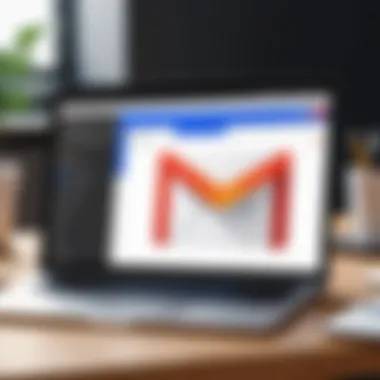
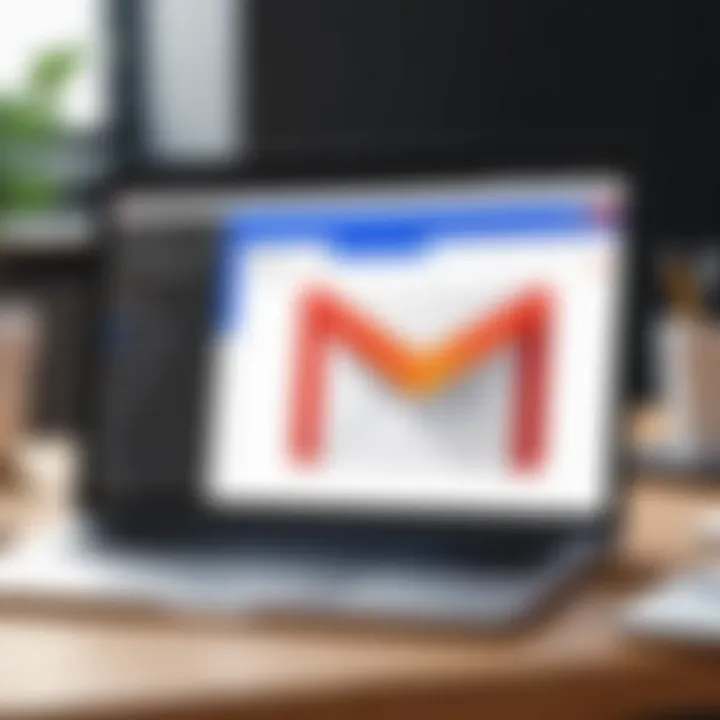
One of the most frustrating issues users may face is when their signature doesn't show up in outgoing messages. This can happen for several reasons. First and foremost, double-check the settings: navigate to the Gmail settings, go to the "Signature" section, and ensure that it's activated. Sometimes, users may create a signature but forget to assign it to their default settings, which can leave them scratching their heads when their emails go out without the signature.
In addition, if you are sending emails from a mobile device or through a different email client, it’s possible that the signature isn’t synced correctly. Gmail signatures are typically tied to the Gmail interface, so switching platforms can create discrepancies. For instance, if you set up your signature on a desktop but send an email from a smartphone app, the signature may not appear as expected.
Also, be mindful of browser extensions or ad blockers that can interfere with Gmail’s functionality. Clearing your browser cache may sometimes resolve this issue as well. Regularly updating your app or browser can prevent compatibility issues that obstruct signature visibility in emails.
"A signature is more than just a sign-off; it’s an extension of your professional identity. Ensure it appears confidently in each message."
Formatting Problems on Different Devices
Formatting issues can also rear their ugly heads when using Gmail signatures, particularly when accessing emails on different devices or platforms. Each device displays text and images based on its own parameters, and this inconsistency can result in jarring appearances. For instance, what looks polished on a desktop might appear cluttered or misaligned on a smartphone or tablet.
When incorporating images—like logos—into your signature, consider using a hosting platform that can maintain the image quality across different devices. Images can sometimes be stripped from emails by security settings, and some recipients may not display them correctly at all. To guard against this, embed the image properly and provide alternative text so that even if it doesn’t show, the recipient understands what should be there.
Font choices and colors are another consideration. Gmail does allow some customization, but to keep your signature looking sharp, stick to recognizable web-safe fonts. Custom fonts might not render correctly on all devices, making the signature unreadable or visually inconsistent.
It's also wise to test how your signature appears on various devices before settling on a final design. Sending test emails to friends or colleagues on smartphones, desktops, and web clients can provide invaluable feedback on how your signature might look to other recipients.
Ensuring your signature is adaptable can make a world of difference in how professional your communications appear across the board.
Maintaining Your Gmail Signature
In the realm of professional communication, the significance of maintaining a current and relevant Gmail signature cannot be overstated. A signature acts as your digital business card, leaving an impression with each email you send. If your signature isn't regularly updated, it may convey outdated information, misrepresent your role, or hinder your ability to connect with contacts effectively. A well-maintained signature ensures that your recipients always have access to the most accurate information about you or your organization.
Moreover, as your personal or professional circumstances evolve, your email signature should reflect those changes. Whether you're stepping into a new role, changing your business contact details, or adding new achievements, these updates help portray a professional image that resonates with the recipients. Regular check-ins on your signature, akin to spring cleaning, can prevent any embarrassing miscommunications.
Updating Signature Information Regularly
Keeping your signature fresh involves more than just occasional tweaks; it’s about being proactive. Consider the following key points when updating your signature:
- Change in Role or Department: Whenever there’s a shift in your position, make sure your signature mirrors your new title and responsibilities. Leaving an outdated title can confuse recipients regarding your authority or expertise.
- Contact Information Changes: Simple updates like a new phone number or email address need to be reflected immediately to avoid missed communications. Not to mention, a broken link or wrong contact information can lead to frustrating encounters.
- New Designations or Achievements: If you've earned new certifications or accolades, why not flaunt them? Adding such details can enhance your credibility and professionalism.
Remember, a signature should never be set in stone. Regular maintenance isn’t just about aesthetics; it’s about crafting your digital footprint as an engaged professional.
Archiving Old Signatures for Reference
Over time, you might find that certain versions of your signature had historical significance or captured notable achievements. Archiving these old signatures not only serves as a record of your progress but can also be useful for future reference. Here are some points to consider about archiving signatures:
- Documentation of Professional Journey: Keeping a copy of previous signatures can illustrate your career trajectory. It allows you to reflect on where you started and how far you've come.
- Reusing Elements: Sometimes, you may want to resurrect a specific style or element from an older signature that resonated well with your audience. Having those archived can save you the hassle of starting from scratch.
- Learning and Adaptation: Reviewing past signatures can offer insights into what worked and what didn’t, helping you hone your signature creation skills.
Ultimately, maintaining your Gmail signature goes beyond just updating information. It’s about a cohesive approach to representing yourself professionally through consistent communication. With these practices in mind, you are well-equipped to present an image that aligns with your professional values.
Tip: Keep your signature as clean and straightforward as possible, focusing on clarity and ease of reading. Less can often be more!
Exploring Signature Management Tools
In the rapidly evolving landscape of digital communication, managing your email signature becomes more than just a matter of aesthetics. With the right signature management tools, you can enhance your branding, streamline communication, and maintain consistency across various platforms. This section delves into why utilizing these tools is crucial for anyone looking to elevate their email game, particularly in professional settings.
Third-Party Signature Generators
Third-party signature generators offer a plethora of options that can work wonders for your email signature. While Gmail’s built-in options can get the job done, these generators often provide a wider range of designs and functionalities. For instance, platforms like WiseStamp and Newoldstamp allow you to create signatures that are visually appealing and tailored to your brand’s identity.
- Customization: With many templates to choose from, you can easily incorporate your company's colors and fonts.
- Integration: Some of these tools seamlessly integrate with various email clients and platforms. This means your signature will be consistently formatted, whether your recipients are using Outlook, Gmail, or another service.
- Analytics: Many signature generators come with analytics features, enabling you to track the performance of emails that included your signature. This can provide insights into how effectively your signature is contributing to brand awareness or outreach.
However, it’s essential to keep in mind that while convenience is enticing, one must be cautious about the tools chosen. Research user reviews and consider data privacy implications before committing to any tool.
Integrating with Email Marketing Tools
Linking your email signature to email marketing tools is a strategic move for both B2B and B2C initiatives. Integrating platforms like Mailchimp or HubSpot can heighten the visibility of your marketing campaigns directly within your correspondence.
- Consistency: This integration helps in maintaining brand consistency, as the signature will echo the style and voice of your marketing materials.
- Promotion of Offers: You can effectively promote upcoming webinars, special discounts, or new services right at the bottom of your emails, potentially increasing engagement rates.
- Lead Generation: By adding a call-to-action button in your signature linked to your email campaigns, you stand to capture leads effectively. For example, a quick link to subscribe to your newsletter can enhance your outreach.
It is critical to test various email marketing integrations to determine which best resonate with your audience and align with your goals. Just as one wouldn’t send emails without proofreading, ensuring that your signature reflects any promotional aspects seamlessly is vital.
"The right tools not only make your life easier but also amplify your message and brand presence in an increasingly crowded inbox."
Closure
In the fast-paced landscape of digital communication, the correlation between a well-crafted email signature and professional success cannot be overstated. An automatic signature in Gmail serves not merely as a decorative appendage to your emails; it embodies your brand identity, professional ethos, and intent. This article presented a step-by-step exploration of the signature-creating process, emphasizing not only the how-to but also the why behind each choice.
Summarizing Key Takeaways
To encapsulate the essential points:
- Professional Image: A thoughtfully designed signature enhances credibility and leaves a positive impression.
- Customization Flexibility: Gmail offers various options to tailor your signature to reflect personal or company branding elements.
- Advanced Features: Incorporating links to social media or a call-to-action can drive engagement and interaction.
- Regular Maintenance: Keeping your signature up-to-date ensures that you always present the most accurate information about yourself or your business.
Being proactive about your email signature means you’re taking charge of how you're perceived in the virtual space.
Encouraging Effective Signature Usage
While the technical aspects of creating a signature may have been addressed, the real challenge lies in its effective usage. Here are several points to guide you:
- Consistency: Use the same signature across all platforms to reinforce your identity.
- Simplicity: Avoid clutter. A clean layout is more appealing and easier to read.
- Adaptation: Keep your audience in mind. A casual signature may work for internal emails but seems out of place in formal communications.
- Feedback: Regularly ask colleagues for their opinions on your signature. A fresh set of eyes can provide insights that a familiar view may overlook.
"Every email is a conversation waiting to happen; your signature should make that invitation clear."
By embracing these practices, you ensure that your automatic signature not only reflects your persona but also serves as an effective tool for communication, driving engagement, and fostering professionalism in all your correspondences.



